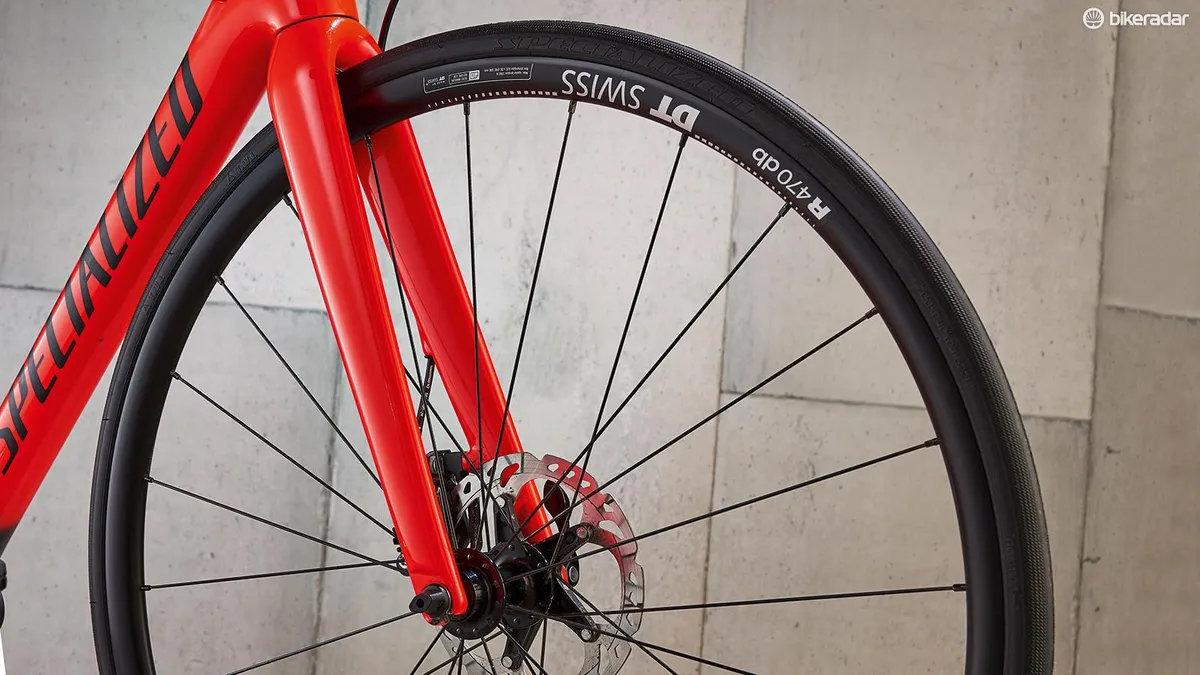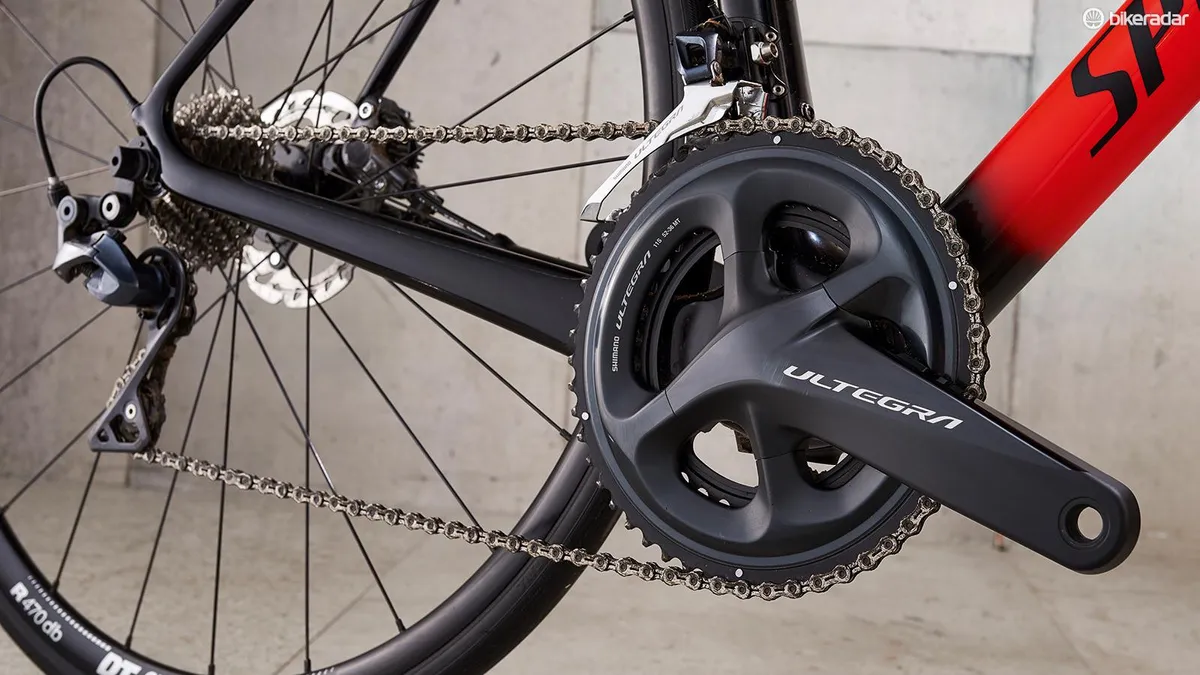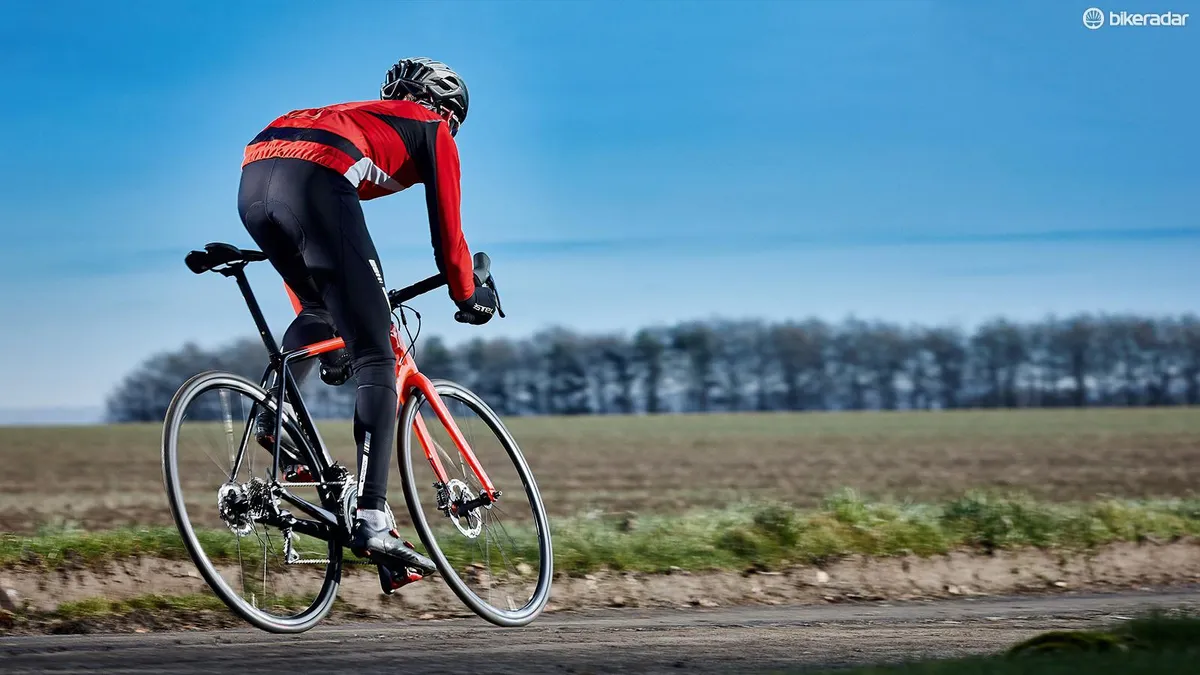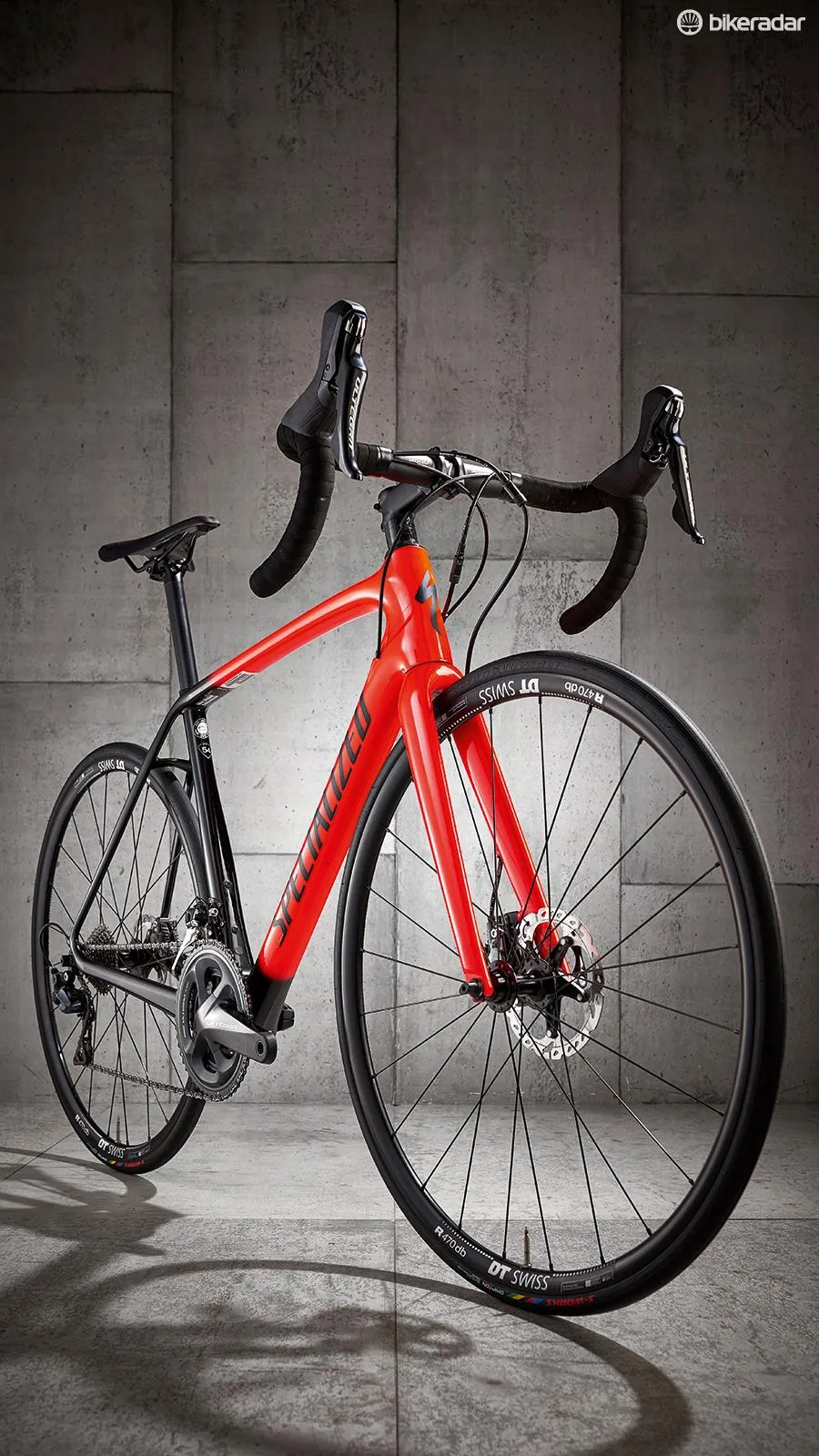Tarmac is the classic climb and distance option in the Specialized arsenal, which is reflected in the mix of chassis features on the SL5 Comp Disc.
- Best road bikes 2018: how to choose the right one for you
- Best road bike helmets: 16 of our top picks
Fork blades are relatively stout rather than aero profiled and the hourglass head-tube feeds into a broad, boxy down tube. The flat, wide top-tube flows out of curved cheekbones before curving gently back to split into two very skinny seatstays either side of the similarly skinny seat tube.
This holds a round, rather than aero, 27mm seatpost via a neat and user-friendly side-accessed internal wedge clamp. The seat tube then swells twice on its way down to a threaded bottom bracket that will be appreciated by high mileage traditionalists who have had bad experiences with press-fit setups.
The frame shows its ‘before the latest standards became standard’ age slightly. Mountain bike-style post brake mounts at the end of the chunky chainstays aren’t as neat as flat mounts. Conventional quick-release spindles aren’t as secure as thru-axles either, but are fractionally faster to use.

Specialized has specced the Tarmac appropriately for its all-rounder character. The shallow DT Swiss rims are noticeably more forgiving and lively in feel than the deep section rims on other bikes. The S-Works Turbo tyres have a quality, smoothing feel compared to the mid-range rubber elsewhere too.
You get steel/alloy sandwich IceTec rotors to soak up a bit of extra braking heat without looking like ’70s spoke protectors. The new Shimano Ultegra is also flawless in function, even though Specialized has sneaked a KMC chain and 105 cassette into the mix.
The minimalist saddle and skinny seatpost keep overall weight low and comfort levels good, even on grim road surfaces. The compact bar shape means it’s surprisingly hard to reach the brakes from the drops, and the short 90mm stem didn’t agree with most of our testers.
While some riders might like the lighter steering feel and reduced reach, the consensus was that it creates a cramped front end on an otherwise well balanced shape. It’s very twitchy too, catching me out with a sudden, treacherous tuck under when I was sprinting hard out of the saddle.

Position and handling are easily remedied with a 110mm stem, and I’d take advantage of Specialized’s bike fitting service to get one swapped in before you leave the shop.
Once sorted the Tarmac is an enjoyable and entertaining all-rounder that runs a happy balance between most performance parameters. The light rims and tyres mean it accelerates eagerly and the shortest wheelbase and some of the steepest handling angles on test make it equally keen to dive through corners. It’s not the stiffest bike when it comes to grinding a big gear from the saddle, but stand up and dance and it won’t make climbing more of a chore than it needs to be.
Even with relatively small volume tyres it screens out smaller road buzz and chatter for comfortable cruising. Just be ready for a jolt over bigger/squarer black top blemishes — particularly out of the saddle — as it’s still very much a road race bike in character.


